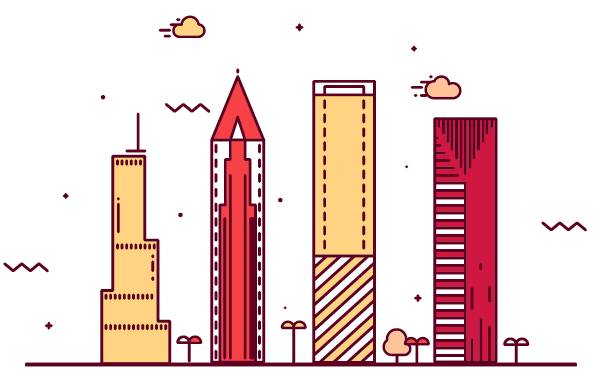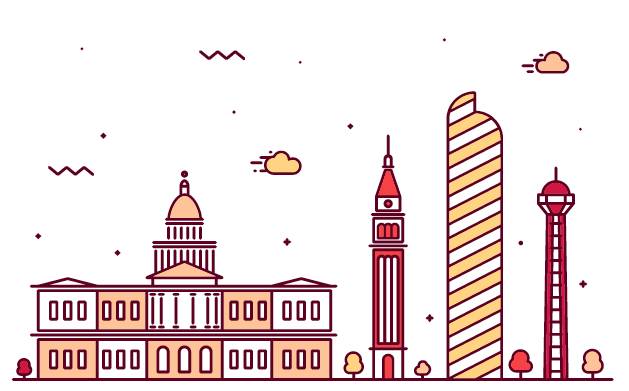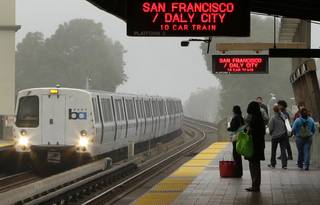Monday, Jan. 18, 2016 | 1:58 a.m.
Related Content
- How does Southern Nevada pay for a new mass transit system?
- Light rail: The future of transportation in Las Vegas?
- How does a plan like this come to be? Who is responsible
- Rail projects in other cities: How’d they do it?
- Getting Southern Nevada’s future on the right track
- How mass transit will affect Southern Nevada business
- How mass transit will affect Southern Nevada tourism
- How mass transit will affect Southern Nevada tourism
- How mass transit will affect downtown Las Vegas
- How mass transit will affect North Las Vegas
- How mass transit will affect sports in Southern Nevada
- How mass transit will affect Southern Nevada’s people and lifestyle
- A local’s take: The evolution of transportation in Las Vegas
- Editorial: Why Southern Nevada needs mass transit
- The Sun's light rail coverage
When Benjamin Ross moved to the Washington, D.C., area years ago, the city felt like one big suburb. Despite its large population, Washington’s walkability and urban vibe paled in comparison with New York’s or Boston’s.
But that changed after the Metro rail system was built.
“It has completely transformed the city,” said Ross, a transit advocate who wrote a book about suburban sprawl.
Ross has seen the impact Metro has had on Washington neighborhoods, increasing development, density and connectivity. And he has fought to continue expanding the transit system by supporting the creation of a light rail line that would run through Washington’s Maryland suburbs, including Bethesda, Md., where Ross lives.
Washington is far from the only city that has seen its urban landscape transformed by new transportation options.
Consider Denver. Colorado’s most populous city began operating just a few miles of light rail in 1994. Since then, the light rail has grown into a regional transit system that’s still expanding.
It wasn’t easy getting there, said Scott Reed, of Denver’s Regional Transportation District. Denver had to overcome a large amount of speculation and uncertainty about whether light rail could be successful in a western city accustomed to cars as the dominant mode of transportation, Reed said.
Yet, once the first 5.3 miles of light rail was up and running, many opinions were swayed. Officials immediately had to order additional cars.
“The argument completely shifted from ‘Would anybody want this?’ to ‘How soon can I get the line in my area?’ ” Reed said. “It was almost overnight.”
The impact on neighborhoods has been unmistakable, said Reed, a Denver transportation district employee for more than two decades. Development has followed the spread of the city’s transportation projects, including the recent conversion of Denver’s Union Station into a hub for light rail, buses and trains. The changes created a new epicenter downtown, Reed said.
There are other examples, too. Development along Phoenix’s 20-mile light rail route exceeded $8 billion, officials in the region said. The system, Valley Metro, cost $1.4 billion to build and opened in 2008.
Similarly, Orlando, Fla., has tracked dozens of construction projects around its new commuter rail system, SunRail, which opened in 2014. Within a 10-minute walk of its rail stations, 13 projects worth almost $550 million are being built. Another 16 projects worth $1.8 billion have been announced or are under review, SunRail officials say.
Las Vegas has toyed with mass-transit projects multiple times.
About 10 years ago, the Regional Transportation Commission considered a 30-plus mile light rail system to link Henderson, the Strip, downtown Las Vegas and North Las Vegas. But the idea encountered resistance, particularly from Henderson residents who didn’t want mass transit running through their neighborhoods. The RTC moved forward with bus rapid transit instead.
Years later, a state legislator proposed building a similar light rail system to connect the valley’s major areas, but those plans never materialized, either.
RTC General Manager Tina Quigley said the most recent light rail proposal may have a better shot because it is the result of collaboration among many stakeholders, including resort executives, government officials and tourism leaders, whose support is needed to make the project happen.
Of course, the process is in its early stages, and there remains plenty of room for critical voices to emerge as details are refined. In addition, Ross said, Las Vegas could struggle because of the width of its thoroughfares, some of which may need to become more pedestrian-friendly to house light rail stations.
Yet Las Vegas has plenty of factors in its favor: a consistently high volume of tourists who would ride the system and a steady flow of employees who work nontraditional hours, to name a few.
Transportation experts from other regions have taken notice.
“From, I think, the first time I went to Vegas, I thought that the Strip was an absolute natural for light rail, just because of the amount of people and the crowds,” said Paul Jablonski, CEO of San Diego’s Metropolitan Transit System. “I’ve ridden the bus system a number of times on the Strip. It’s overcrowded; you have problems with too many people at stops waiting to get on; the system is slow. Light rail would have the capacity and the ease of boarding to move people quickly.”
Orlando, Fla.

Metro area population
2.3 million
Cost of Sunrail project
32 miles = $1.2 million
With its iconic theme parks, warm weather and popularity as a convention destination, Orlando is an easy comparison to Las Vegas, and its commuter rail system gives the area a bragging right over the Strip.
SunRail opened in May 2014 as a nearly 32-mile system with 12 stations along a north-south route. The state bought 61 miles of existing tracks that had been owned and used by the CSX Transportation railroad, then “brought them up to daily commuter rail standards,” said Steve Olson, a Florida Department of Transportation spokesman.
SunRail cost $1.2 billion, according to the Orlando Sentinel, including $615 million for capital costs. The project was backed by federal, state and local public funds.
For the first seven years, the state transportation department will operate the system. After that, local governments will be in charge.
For now, the system has a more limited schedule than larger rail lines in other cities. It operates only Monday through Friday, although it could operate on the weekends, Olson said.
During its first year, SunRail reported nearly 900,000 fare-paying riders, with an average daily ridership of about 3,700, according to media reports.
“Our core commuters are just totally sold on it, and they’re really a loyal bunch,” Olson said. “The challenge, though, is you need to keep growing that number and bringing new people into the system. That’s where we’re at right now.”
Ridership numbers are expected to grow, thanks to SunRail’s second phase expansion, which is under way. The next phase includes a 17.2-mile southern addition and a 12-mile northern addition. Both are set to be operational by late 2017.
Phoenix

Metro area population
4.5 million
Cost of project
20 miles = $1.4 million
While Phoenix may not have as dominant a tourism industry as Las Vegas, it is comparable in other ways, namely because it’s also a sunny Southwestern city with suburban sprawl.
With 4.5 million residents, the Phoenix area is home to more than twice as many residents as Clark County and is one of the nation’s largest metros. Given that, it’s not surprising Phoenix has taken more aggressive steps to move its people around faster.
The first installment of the region’s light rail system, a 20-mile line that’s part of the Valley Metro public-transit system, was completed in December 2008. It since has been extended to 23 miles, with plans to add more this year. It serves Phoenix as well as the neighboring cities of Tempe and Mesa.
The first 20 miles of light rail cost $1.4 billion to build and was financed by local and federal funds. Phoenix voters in 2000 approved a 0.4 percent sales tax increase to pay for public-transit improvements, including light rail. Voters in Maricopa County in 2004 extended an older half-cent sales tax, agreeing to use some of the money to fund the capital costs of building light rail.
The light rail’s operating costs are covered by the cities where the system operates, Valley Metro spokeswoman Susan Tierney said. The light rail has an annual ridership of about 14.3 million and an average weekday ridership of more than 43,000.
And the system is poised for growth. Phoenix voters in 2015 approved a major transportation initiative, Proposition 104, that raises the 0.4 percent sales tax to 0.7 percent. It it expected to raise billions of dollars to help fund an ambitious long-term transportation plan that includes tripling the length of the light rail system in the city.
Denver

Metro area population
2.7 million
Size of project
48 miles and growing
Residents of Denver have used light rail for more than 20 years, and the system continues to grow.
Denver’s original 5.3 miles of light rail opened in 1994 to connect a limited portion of the city’s central core. Denver paid for the construction using entirely local money, said Scott Reed, of Denver’s Regional Transportation District.
The district has expanded the line since, adding a southwest corridor in 2000, another line in downtown Denver in 2002 and a southeast corridor in 2006. The system got a green light from the public for its largest expansion in 2004, when voters approved FasTracks, which is bringing 122 miles of additional light rail and commuter rail to the Denver area, as well as 18 miles of bus rapid transit and new transit stations. New light rail lines are expected to open this year.
While FasTracks was approved by voters at a budget of $4.7 billion, the cost has grown by billions of dollars. The project has its critics, but Reed said it has been a net positive for the Denver region. Even the original 5.3 miles brought noticeable changes, Reed said, as businesses wanted to locate near the line and residents prized living nearby. Upgrades to Denver’s Union Station brought even more development.
“As an area native, it has been gratifying to see how investments in commuter rail, light rail and other forms of transit have positively shaped the Denver metro area,” Reed said. “It really becomes an investment for future generations, as well as the current riders. That’s the type of legacy that I’m very proud to leave for my children and beyond.”
San Diego

Metro area population
3.3 million
Cost of San Diego trolley project
54 miles (initial phase cost $7 million per mile)
San Diego launched its light rail system in 1981,
making it something of a pioneer.
Known as the San Diego Trolley, the system began as a 15-mile line that ran from the Mexico border into downtown San Diego. It was built for about $7 million a mile, which Metropolitan Transit System CEO Paul Jablonski called “almost unheard of” because it it was built on old freight tracks.
As did Denver, San Diego kicked off the project
without any federal funds.
At one point, the San Diego system had a farebox recovery rate of well over 100 percent, according to Jablonski, meaning it received more than enough revenue from passenger fares to cover the cost of operations. The recovery rate has fallen to about 60 percent because the system expanded, but it’s still a far better margin than many other public-transit systems are able to achieve.
Over 25 years, the system grew to cover 54 miles, as operators added more lines. The economic impact of the trolley has been massive, Jablonski said. The trolley moves 110,000 people or more each day.
One of the particular benefits for San Diego has been that service workers who may not make enough money to live in more expensive parts of the city can commute using light rail.
“San Diego, to some extent, is kind of like a mini-Vegas,” Jablonski said. “(Light rail) has had a huge impact on people getting to these jobs and making downtown San Diego vibrant and productive and successful, because we deliver the workers there that make all that work.”
And as in other cities, the footprint of San Diego’s light rail system is growing. An 11-mile trolley extension, expected to begin service in 2021, will run from Old Town San Diego to University City.


Join the Discussion:
Check this out for a full explanation of our conversion to the LiveFyre commenting system and instructions on how to sign up for an account.
Full comments policy